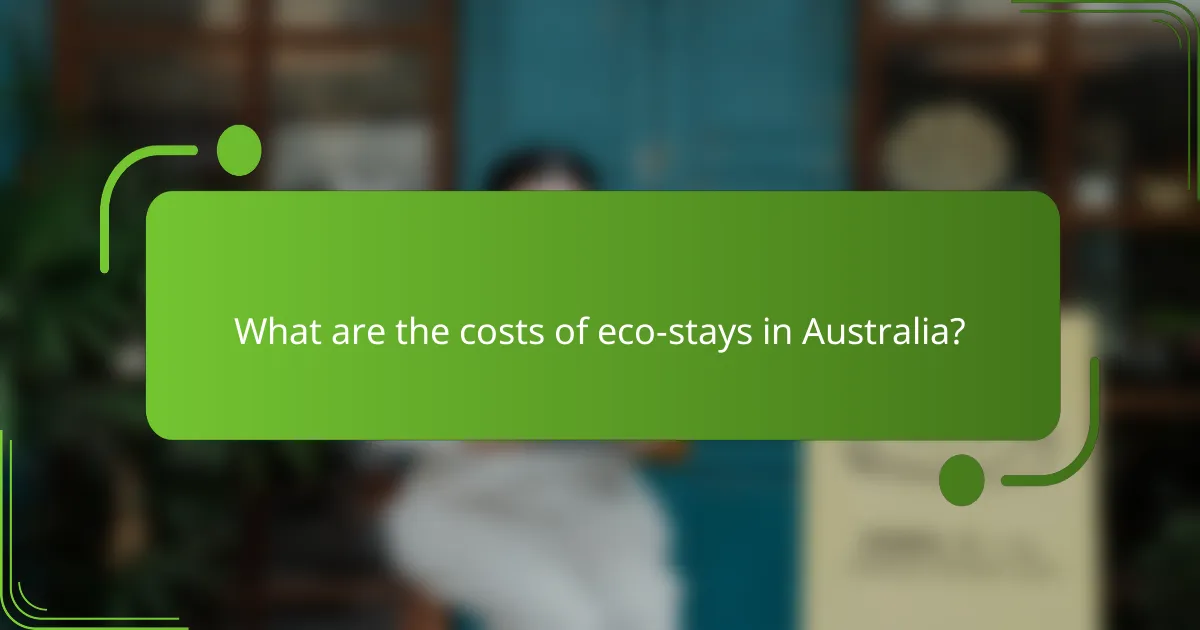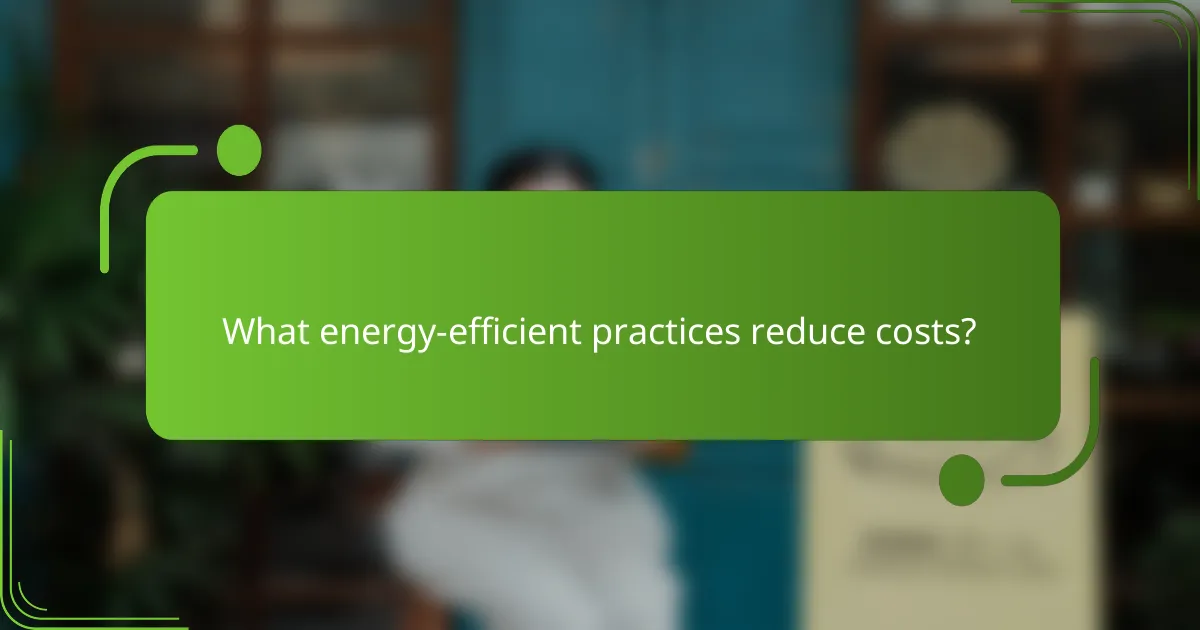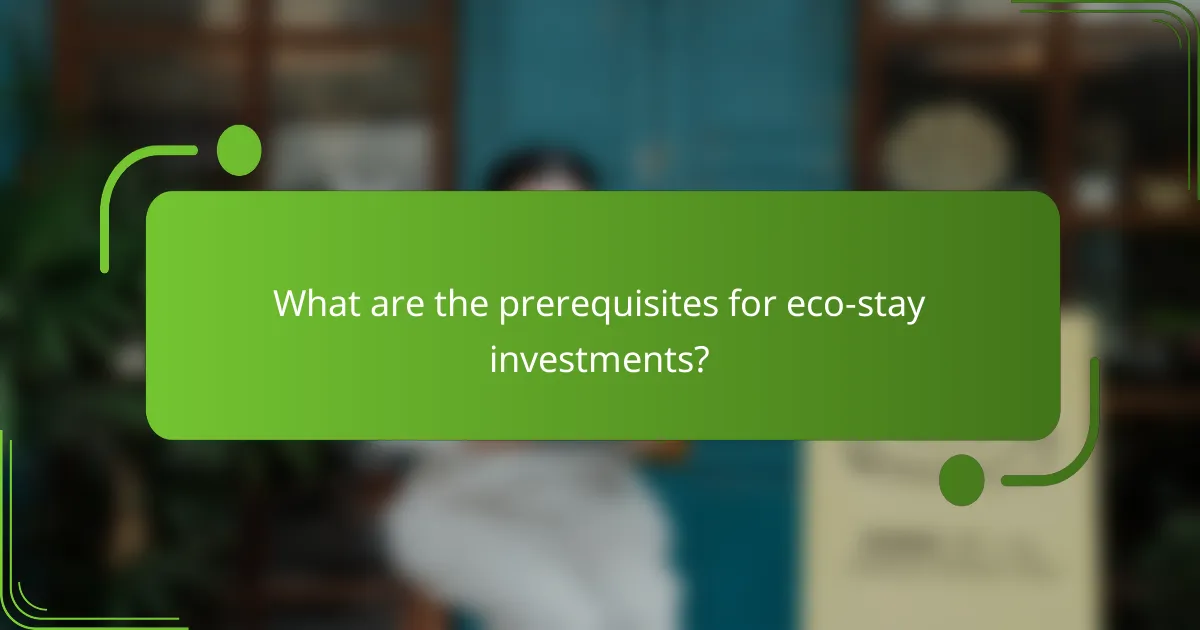Eco-stays in Australia offer a unique blend of sustainability and comfort, with costs that can vary widely depending on location and the extent of eco-friendly features. While initial investments in energy-efficient technologies and sustainable practices may raise prices, they often lead to long-term savings and enhanced property value. By prioritizing energy efficiency, these accommodations not only reduce operational costs but also contribute positively to the environment.

What are the costs of eco-stays in Australia?
The costs of eco-stays in Australia can vary significantly based on location, amenities, and sustainability features. Generally, travelers can expect to pay anywhere from moderate to high rates, reflecting the investment in eco-friendly practices and energy-efficient technologies.
Average nightly rates for eco-stays
Average nightly rates for eco-stays in Australia typically range from AUD 150 to AUD 400, depending on the type of accommodation and its sustainability features. Budget options may start around AUD 100, while luxury eco-lodges can exceed AUD 500 per night.
For example, a small cabin in a rural area may charge around AUD 150, while a high-end resort with extensive green certifications could command rates closer to AUD 600. Seasonal variations can also influence pricing, with peak tourist seasons often leading to higher rates.
Factors affecting eco-stay pricing
Other considerations include the size and type of accommodation, the availability of on-site activities, and the overall guest experience. Eco-stays that offer unique experiences, such as guided nature tours or farm-to-table dining, may justify higher pricing. Travelers should compare amenities and sustainability certifications to ensure they are getting value for their investment.

How do sustainability investments impact eco-stay costs?
Sustainability investments can significantly influence the costs associated with eco-stays by initially increasing expenses but leading to long-term savings. These investments often include energy-efficient technologies and green certifications that enhance property value and reduce operational costs over time.
Initial investment for green certifications
Obtaining green certifications, such as LEED or Green Key, typically requires a substantial upfront investment. This can range from a few thousand to tens of thousands of dollars, depending on the property’s size and the certification level sought. These costs cover assessments, necessary upgrades, and compliance with sustainability standards.
While the initial financial outlay may seem daunting, many eco-stays find that these certifications attract environmentally-conscious travelers willing to pay a premium for sustainable lodging. Additionally, some certifications may provide access to grants or tax incentives, offsetting initial expenses.
Long-term savings from energy efficiency
Investing in energy-efficient practices can lead to significant long-term savings on utility bills. For instance, properties that implement LED lighting, high-efficiency HVAC systems, and smart thermostats often see reductions in energy costs of 20-50%. These savings accumulate over time, making the initial investment worthwhile.
Moreover, energy-efficient practices can enhance guest comfort and satisfaction, leading to higher occupancy rates and repeat business. Eco-stays that prioritize sustainability not only save money but also build a loyal customer base attracted to their commitment to the environment.

What energy-efficient practices reduce costs?
Energy-efficient practices significantly lower operational costs by minimizing energy consumption and waste. Implementing these strategies not only reduces utility bills but also contributes to environmental sustainability.
Solar energy installations
Solar energy installations harness sunlight to generate electricity, which can drastically cut energy costs. By installing solar panels, properties can reduce reliance on grid power, leading to savings on monthly energy bills.
Consider local incentives such as tax credits or rebates, which can offset initial installation costs. In many regions, the return on investment for solar systems can be realized within a few years, especially in areas with high sunlight exposure.
Water conservation systems
Water conservation systems, such as rainwater harvesting and greywater recycling, help reduce water usage and associated costs. These systems capture and reuse water for irrigation or non-potable uses, which can significantly lower water bills.
Implementing low-flow fixtures and smart irrigation systems can further enhance water efficiency. Many municipalities offer rebates for water-saving devices, making it financially advantageous to invest in these technologies.

What pricing models are used for eco-stays?
Eco-stays utilize various pricing models to balance sustainability investments with affordability for guests. Common models include dynamic pricing strategies and membership programs, each designed to optimize occupancy while promoting eco-friendly practices.
Dynamic pricing strategies
Dynamic pricing strategies adjust rates based on demand, seasonality, and occupancy levels. For eco-stays, this means prices may fluctuate during peak tourist seasons or special events, often increasing by 10-30% compared to off-peak times.
These strategies can help eco-stays maximize revenue while encouraging bookings during slower periods through lower rates. Guests should be aware that last-minute bookings might yield better deals, while early reservations can secure lower prices.
Membership and loyalty programs
Membership and loyalty programs incentivize repeat stays by offering discounts, perks, or exclusive access to eco-friendly experiences. These programs can provide savings of 5-15% on bookings for members, making them attractive for frequent travelers.
When considering such programs, guests should evaluate the benefits against potential membership fees. Some eco-stays also partner with local businesses to offer additional rewards, enhancing the overall value of membership.

How do eco-stays compare to traditional accommodations?
Eco-stays often emphasize sustainability and environmental responsibility, which can lead to different cost structures compared to traditional accommodations. While initial investments in eco-friendly practices may be higher, the long-term savings and benefits can make them competitive options for travelers.
Cost-benefit analysis of eco-stays
When evaluating eco-stays, consider both upfront costs and long-term savings. Eco-friendly accommodations may require higher initial investments in renewable energy sources, water-saving fixtures, and sustainable materials. However, these investments can lead to reduced utility bills and maintenance costs over time.
For example, properties utilizing solar energy may see energy costs drop significantly, potentially saving hundreds of dollars annually. Additionally, many eco-stays offer incentives such as discounts for longer stays or loyalty programs, which can enhance their affordability.
Guest satisfaction ratings
Guest satisfaction ratings for eco-stays often reflect the unique experiences they provide. Many travelers appreciate the commitment to sustainability, which can enhance their overall enjoyment and sense of purpose during their stay. Reviews frequently highlight the quality of amenities, such as organic bedding and locally sourced food options.
Research indicates that eco-friendly accommodations generally receive higher satisfaction scores, particularly among environmentally conscious travelers. This demographic values not only the comfort of their stay but also the positive impact they have on the environment, leading to repeat visits and recommendations.

What are the prerequisites for eco-stay investments?
Eco-stay investments require a clear understanding of sustainability goals, local regulations, and market demand. These prerequisites help ensure that the investment is both environmentally responsible and financially viable.
Understanding local regulations
Before making eco-stay investments, familiarize yourself with local regulations regarding environmental standards and building codes. Many regions have specific guidelines that promote energy efficiency and sustainable practices, which can affect your project’s feasibility.
For instance, some areas may offer incentives for using renewable energy sources or implementing green building techniques. Researching these regulations can provide financial benefits and ensure compliance with local laws.
Identifying suitable locations
Choosing the right location is critical for eco-stay investments. Look for areas that attract eco-conscious travelers, such as regions known for their natural beauty or sustainability initiatives. Proximity to natural attractions can enhance the appeal of your eco-stay.
Additionally, consider the availability of resources like water and renewable energy sources. Locations with established infrastructure for sustainability, such as solar energy or waste recycling, can significantly reduce operational costs and improve your eco-stay’s overall efficiency.

What emerging trends are shaping eco-stay pricing?
Emerging trends in eco-stay pricing are driven by a growing emphasis on sustainability and energy efficiency. As travelers increasingly seek environmentally friendly accommodations, properties are adapting their pricing models to reflect investments in sustainable practices and technologies.
Increased demand for sustainable travel
The rising demand for sustainable travel significantly influences eco-stay pricing. As more travelers prioritize eco-friendly options, properties that implement sustainable practices can often charge a premium. This trend is particularly evident in regions where eco-tourism is gaining traction, such as parts of Europe and North America.
For example, accommodations that use renewable energy sources, offer organic food options, or engage in waste reduction strategies may see higher occupancy rates and can justify higher prices. Travelers are willing to pay more for experiences that align with their values, making sustainability a key factor in pricing strategies.
Technological advancements in energy efficiency
Technological advancements in energy efficiency are reshaping the pricing landscape for eco-stays. Properties that invest in energy-efficient systems, such as smart thermostats, LED lighting, and solar panels, can reduce operational costs over time. These savings can be passed on to guests or reinvested into further sustainability initiatives.
Moreover, properties that achieve certifications like LEED or Energy Star can leverage these credentials to attract eco-conscious travelers. Implementing energy-efficient practices not only lowers costs but also enhances the property’s marketability, allowing for competitive pricing in the eco-stay segment.
